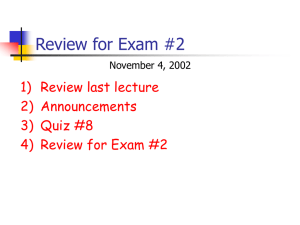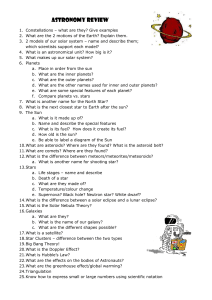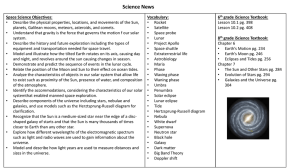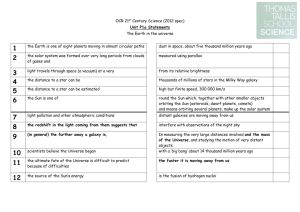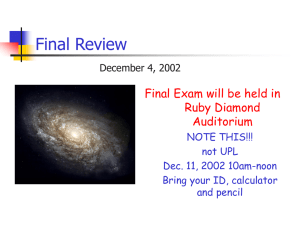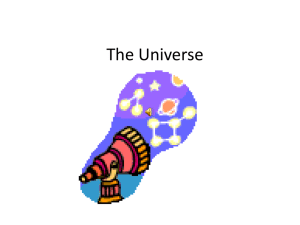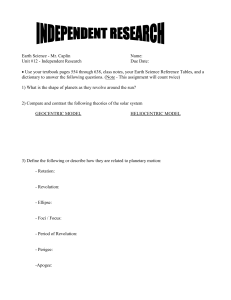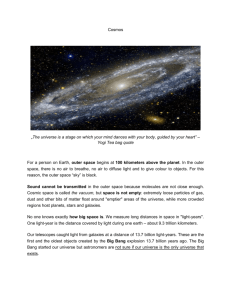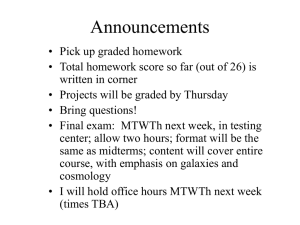Universe
advertisement
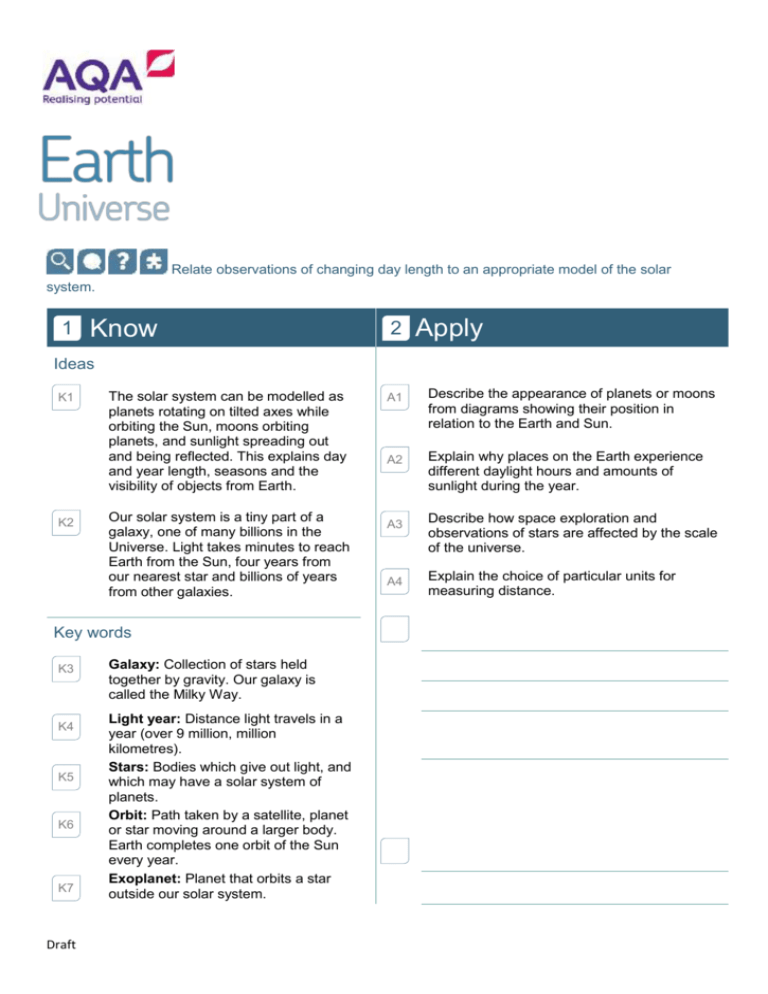
Relate observations of changing day length to an appropriate model of the solar system. 1 Know 2 Apply Ideas K1 K2 The solar system can be modelled as planets rotating on tilted axes while orbiting the Sun, moons orbiting planets, and sunlight spreading out and being reflected. This explains day and year length, seasons and the visibility of objects from Earth. Our solar system is a tiny part of a galaxy, one of many billions in the Universe. Light takes minutes to reach Earth from the Sun, four years from our nearest star and billions of years from other galaxies. Key words K3 K4 K5 K6 K7 Draft Galaxy: Collection of stars held together by gravity. Our galaxy is called the Milky Way. Light year: Distance light travels in a year (over 9 million, million kilometres). Stars: Bodies which give out light, and which may have a solar system of planets. Orbit: Path taken by a satellite, planet or star moving around a larger body. Earth completes one orbit of the Sun every year. Exoplanet: Planet that orbits a star outside our solar system. A1 Describe the appearance of planets or moons from diagrams showing their position in relation to the Earth and Sun. A2 Explain why places on the Earth experience different daylight hours and amounts of sunlight during the year. A3 A4 Describe how space exploration and observations of stars are affected by the scale of the universe. Explain the choice of particular units for measuring distance. 3 E1 Extend Predict patterns in day length, the Sun's intensity or an object's shadow at different latitudes. E2 Make deductions from observation data of planets, stars and galaxies. E3 Compare explanations from different periods in history about the motion of objects and structure of the Universe. Draft


